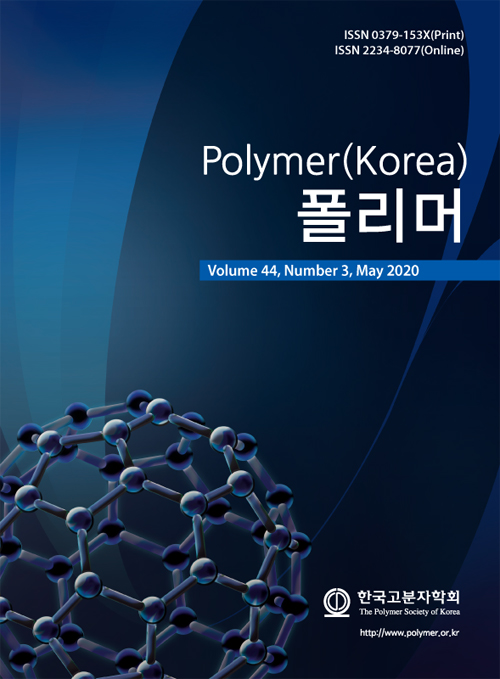- Nucleation-Growth Processes and Morphological Evolution of Polyaniline during Potentiodynamic Polymerization
Department of Chemistry, The University of Suwon, Hwaseoung-si, Gyeonggi-do 18323, Korea
- 변전위법 중합 과정에서 Polyaniline 핵 형성 및 성장 프로세스와 모폴로지 진화
수원대학교 공과대학 융합화학과
The nucleation and growth
processes associated with the morphological evolution of polyaniline during
potentiodynamic polymerization have been investigated. Film deposition was
first ruled by progressive nucleation with a two-dimensional growth process,
and followed by progressive nucleation with a three-dimensional growth process.
Initially, a smooth and compact polyaniline film was deposited on the indium tin
oxide electrode, whereas a fibrous three-dimensional porous network structure
was observed after the initial stage. As the number of cycles increased, the
film became rougher and more porous three-dimensional network structure with
higher free volume, resulting in higher doping levels. Finally, the increased
doping levels and a higher charge carrier mobility lowered the sheet resistance
of the polyaniline film.
변전위법 중합 과정에서 폴리아닐린의 핵 형성 프로세스 및
성장 프로세스를 모폴로지 진화와 연관하여 확인하였다. 필름증착은 초기에 2차원 성장 프로세스를 통한 점진적 핵 형성이 이루어지고, 이어서 3차원 성장 프로세스를 통한 점진적 핵 형성이 지배적이었다. 초기에는, ITO 전극 상에 부드럽고 치밀한 폴리아닐린 필름이 증착되었지만, 초기
단계 후에는 섬유상의 3차원 다공성 네트워크 구조가 관찰되었다. 순환
전압전류의 사이클이 증가함에 따라, 필름은 큰 자유 부피를 가지며 더욱 거칠고 다공성인 3차원 네트워크 구조가 되면서 도핑 레벨이 증가되었다. 결국, 증가된 도핑 레벨과 전하 캐리어 이동성의 향상으로 인해 폴리아닐린 필름의 면저항이 낮아졌다.
Keywords: polyaniline, potentiodynamic, nucleation process, growth process, morphology
- Polymer(Korea) 폴리머
- Frequency : Bimonthly(odd)
ISSN 0379-153X(Print)
ISSN 2234-8077(Online)
Abbr. Polym. Korea - 2023 Impact Factor : 0.4
- Indexed in SCIE
 This Article
This Article
-
2020; 44(3): 369-376
Published online May 25, 2020
- 10.7317/pk.2020.44.3.369
- Received on Feb 14, 2020
- Revised on Mar 15, 2020
- Accepted on Mar 16, 2020
 Correspondence to
Correspondence to
- Eunok Kim
-
Department of Chemistry, The University of Suwon, Hwaseoung-si, Gyeonggi-do 18323, Korea
- E-mail: eokim@suwon.ac.kr










 Copyright(c) The Polymer Society of Korea. All right reserved.
Copyright(c) The Polymer Society of Korea. All right reserved.